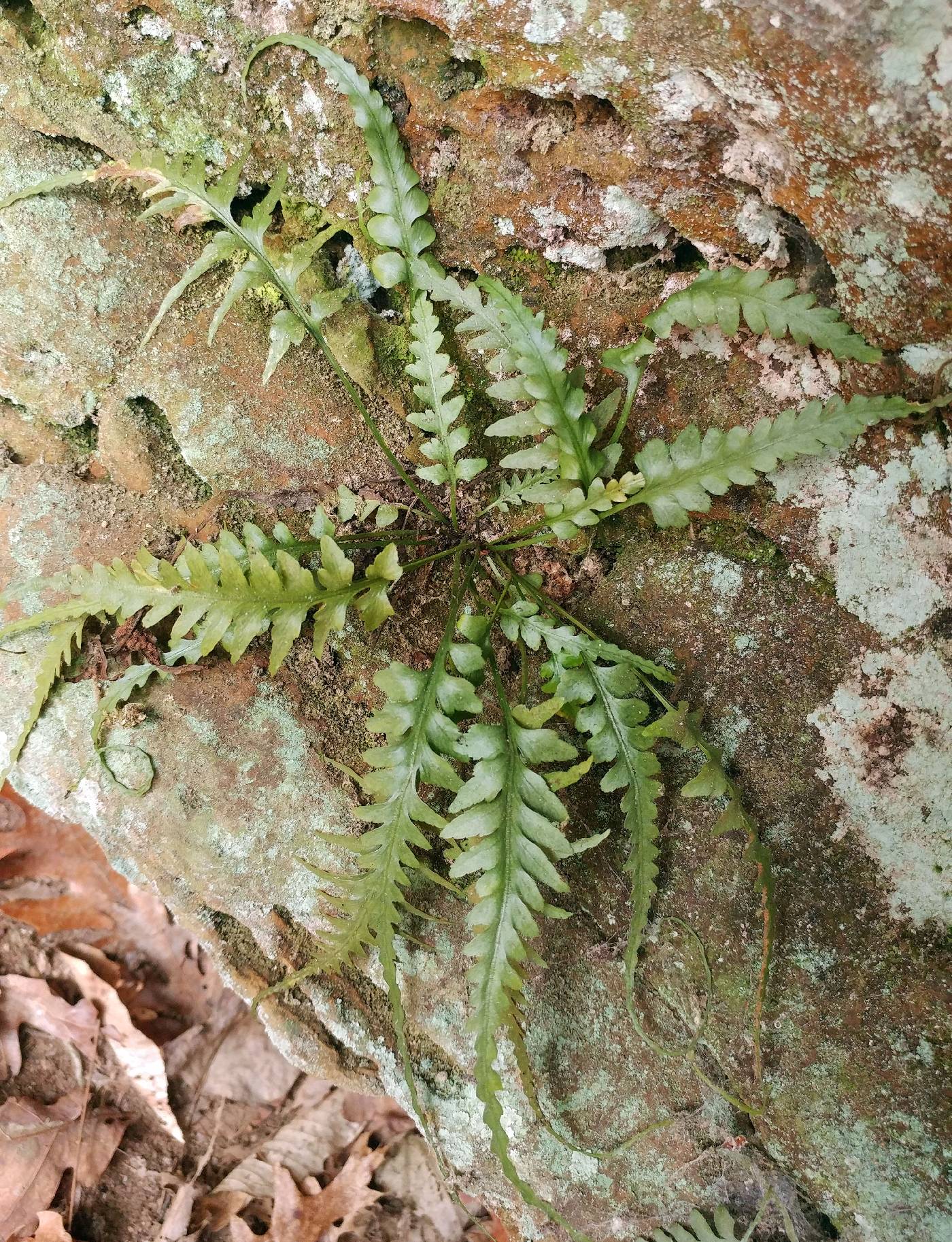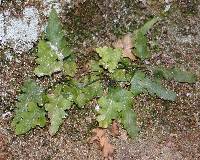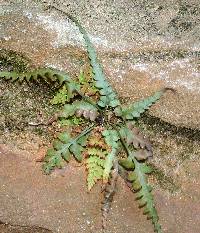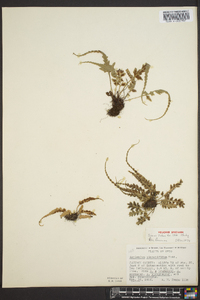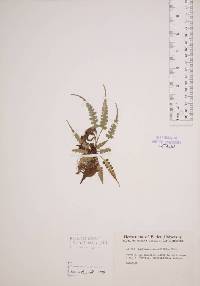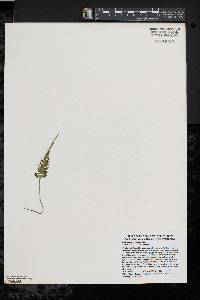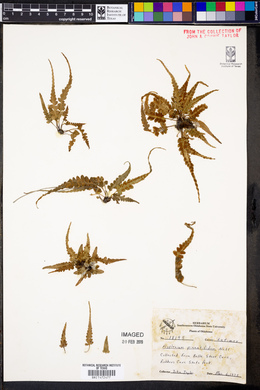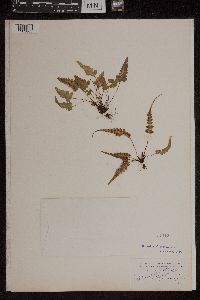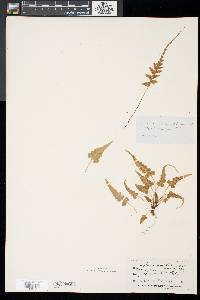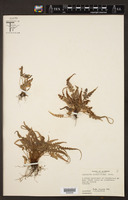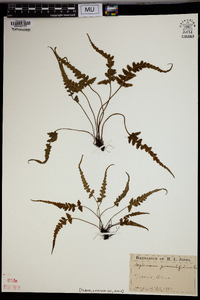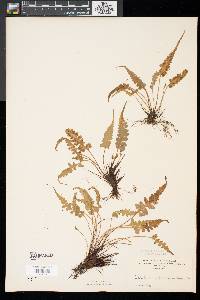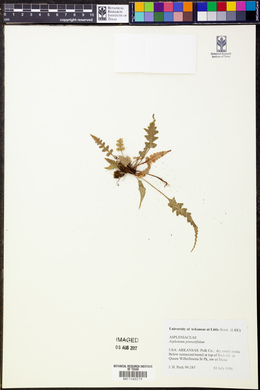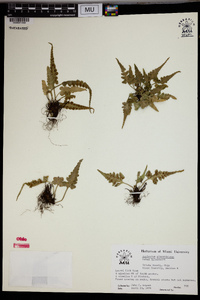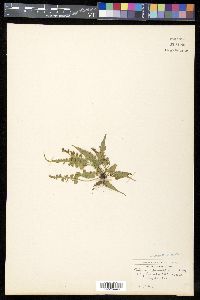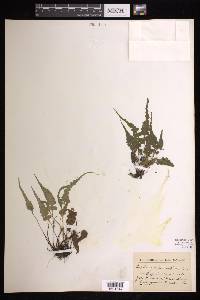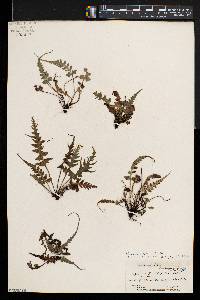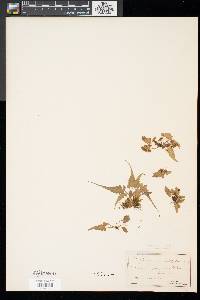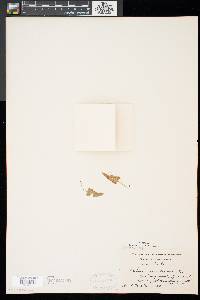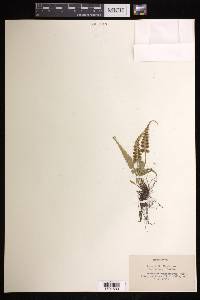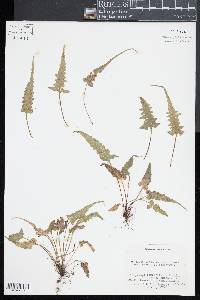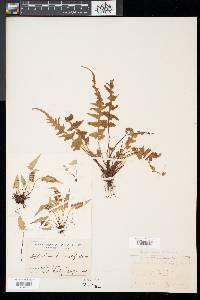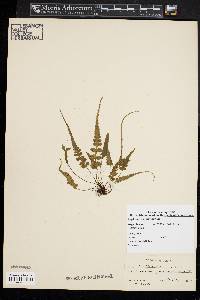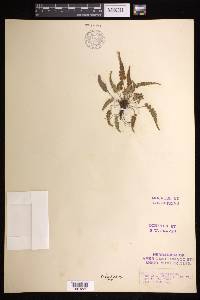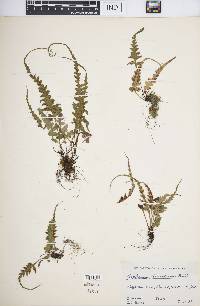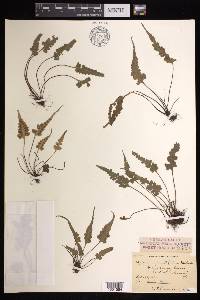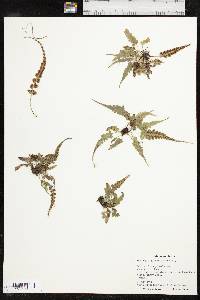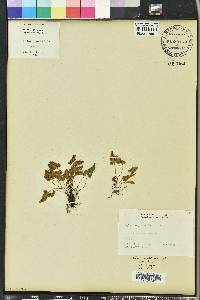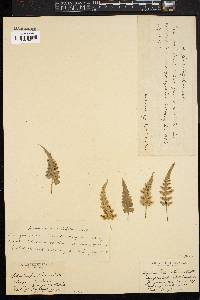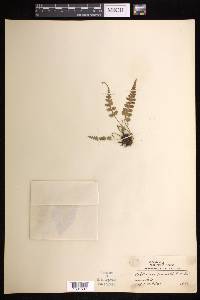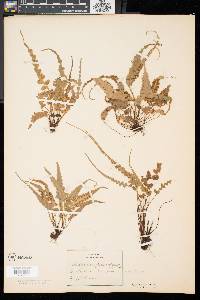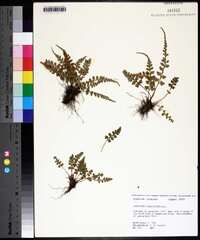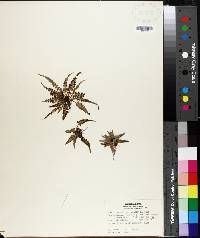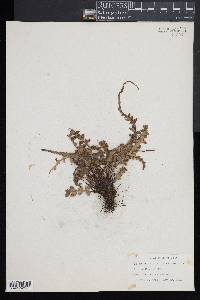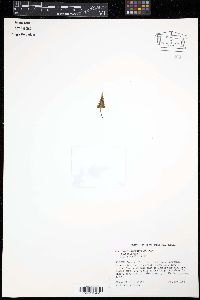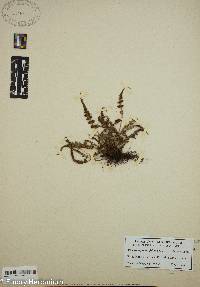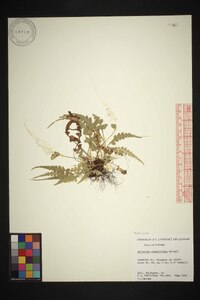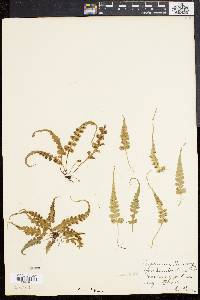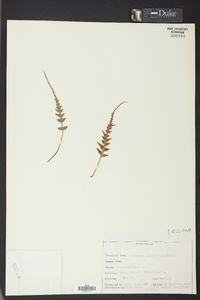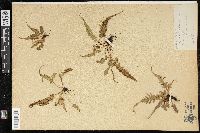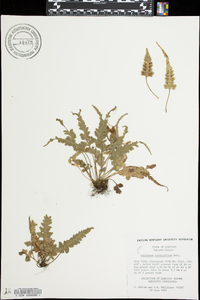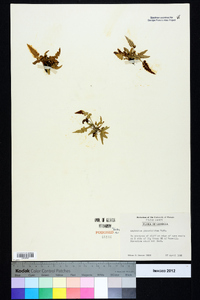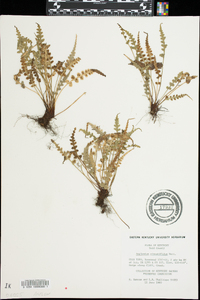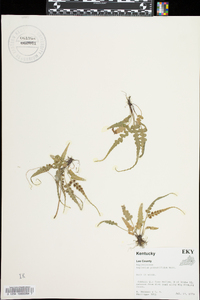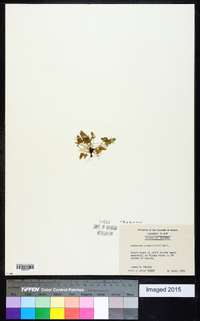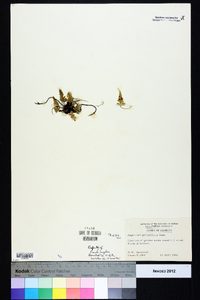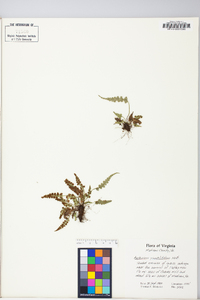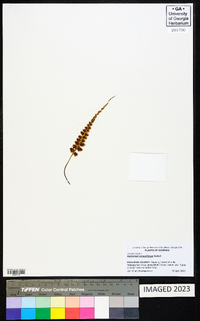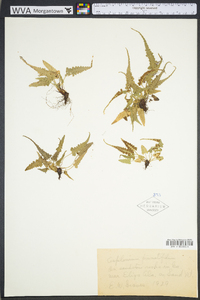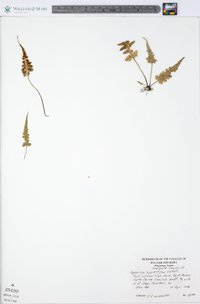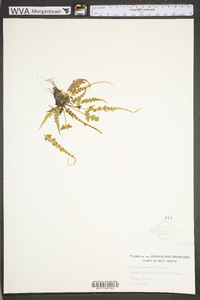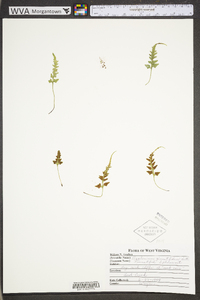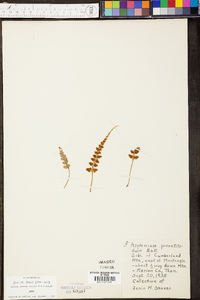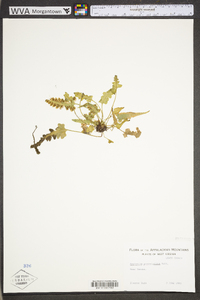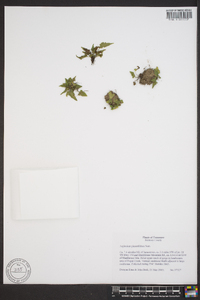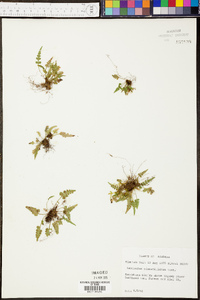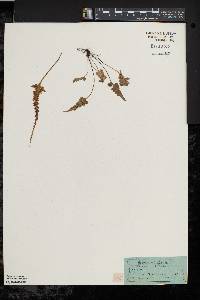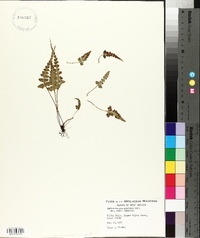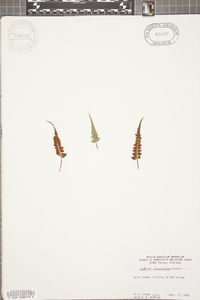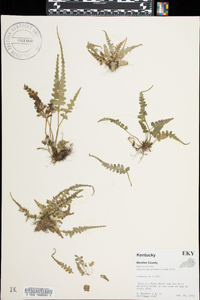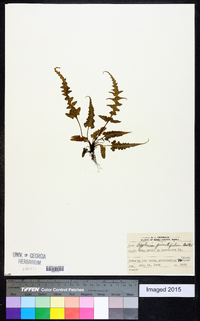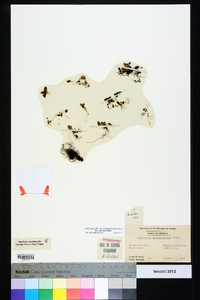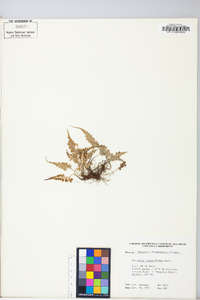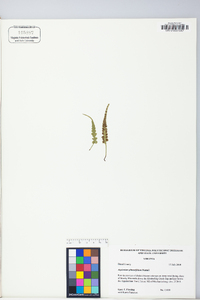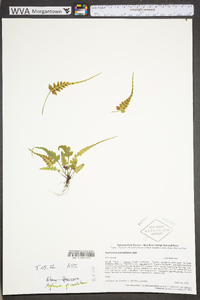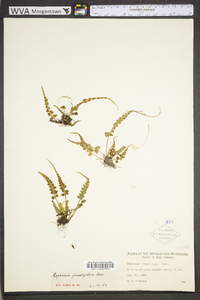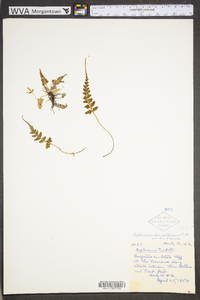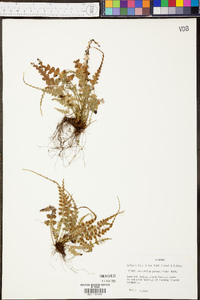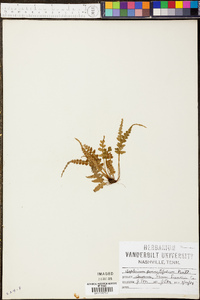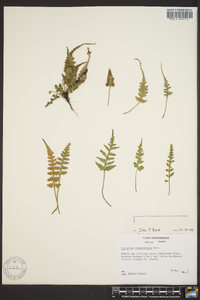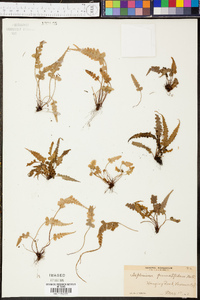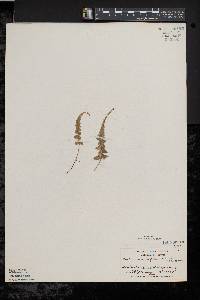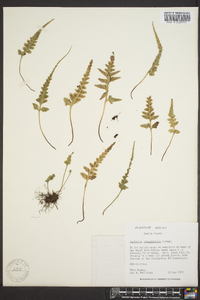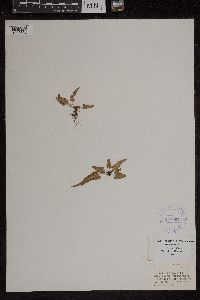
|
|
|
|
Family: Aspleniaceae
Lobed Spleenwort
|
Roots not proliferous. Stems short-creeping to erect, frequently branched; scales dark reddish brown, narrowly deltate, 3--5 × 0.3--0.5 mm, margins entire. Leaves monomorphic. Petiole dark reddish brown at base, fading to green in distal 1/3--1/2, lustrous, 1--10 cm, 1/5--1 times length of blade; indument of dark reddish brown, narrowly deltate scales at very base, grading distally into hairs. Blade narrowly deltate, often irregular in outline, pinnatifid or often with single pair of pinnae proximally, 2--17(--20) × 1--4(--13) cm, thick, pubescent abaxially only; base truncate, cordate, or auriculate; apex acute to long-attenuate, proliferous bud very rare, not known to root in nature. Rachis green, sometimes drying to tan, dull; hairs on abaxial surface only, scattered, minute. Pinnae 0--1 pair, ovate to deltate, sometimes narrowly so, 5--20(--90) × 0.4--1(--1.2) mm; base truncate to acute; margins crenate to serrate; apex rounded to attenuate. Veins free (rarely anastomosing), obscure. Sori 1--6(--40+) per segment, usually confluent with age. Spores 64 per sporangium. 2 n = 144. Cliffs, ledges, and boulders of sandstone and other acidic rocks; 0--1000 m; Ala., Ark., D.C., Ga., Ill., Ind., Ky., Md., Miss., Mo., N.J., N.C., Ohio, Okla., Pa., S.C., Tenn., Va., W.Va., Wis. Asplenium pinnatifidum is an allotetraploid derived from the hybrid A . montanum × rhizophyllum . Although isozyme studies indicate that this species originated at more than one site (C. R. Werth et al. 1985b), the sterile diploid hybrid is unknown. The species is uncommon in the eastern part of the Appalachian region and becomes much more frequent in the Cumberland and Interior Low plateaus, extending westward into the Ozarks and Ouachitas. It is disjunct in the Driftless Area of Wisconsin in Iowa County (M. G. and R. P. Hanson 1979). It crosses frequently with A . montanum (producing A . × trudellii Wherry), with A . bradleyi (producing A . × gravesii Maxon), with A . platyneuron (producing A . × kentuckiense McCoy), and with A . trichomanes (producing A . × herb-wagneri W. C. Taylor & Mohlenbrock).
Rhizome 1 mm thick, its scales 4-6 mm; lvs spreading, 1-3 dm, the petiole to 12 cm, brown basally or throughout; blade firm, lance-linear, to 2.5 cm wide, deeply pinnatifid or pinnate at the base, merely lobed above, the caudate-attenuate tip wavy or entire; rachis green; pinnate or lobed to 7 pairs or more, the basal ones mostly subrotund to ovate, bluntly toothed; 2n=144, believed to be an alloploid from spp. 2 and 9. Crevices in noncalcareous rocks, and in acid soil; N.J. and Pa. to Ga., w. to Ill., Mo., and Okla. Gleason, Henry A. & Cronquist, Arthur J. 1991. Manual of vascular plants of northeastern United States and adjacent Canada. lxxv + 910 pp. ©The New York Botanical Garden. All rights reserved. Used by permission. From Flora of Indiana (1940) by Charles C. Deam Rare in pockets of dry soil on cliffs in the area of sandstone outcrops. Usually closely associated with Asplenium trichomanes but less frequent. ...... Indiana Coefficient of Conservatism: C = 10 Wetland Indicator Status: n/a |
This project was made possible in part by the Institute of Museum and Library Services [MG-70-19-0057-19].
Powered by Symbiota

